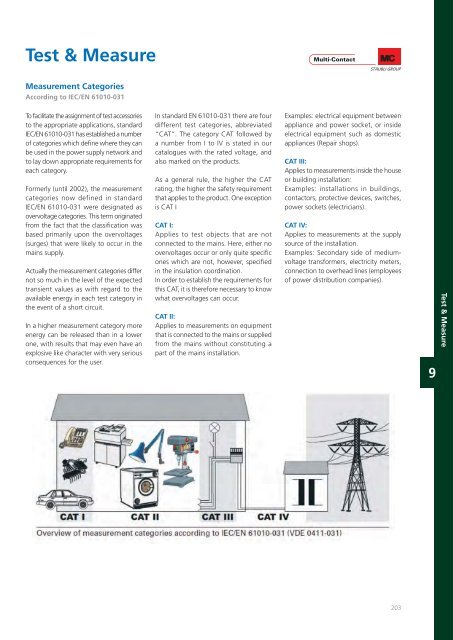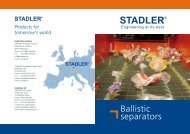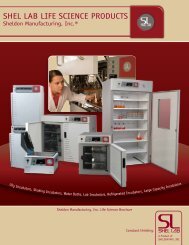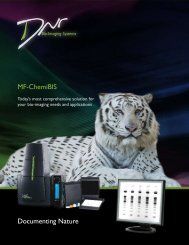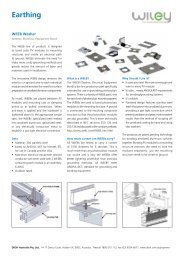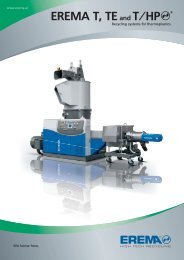Technology DKSH Electrical Catalogue
DKSH Electrical Catalogue 2013 lowres.pdf - DKSH Australia
DKSH Electrical Catalogue 2013 lowres.pdf - DKSH Australia
- No tags were found...
Create successful ePaper yourself
Turn your PDF publications into a flip-book with our unique Google optimized e-Paper software.
Test & Measure<br />
Measurement Categories<br />
According to IEC/EN 61010-031<br />
To facilitate the assignment of test accessories<br />
to the appropriate applications, standard<br />
IEC/EN 61010-031 has established a number<br />
of categories which define where they can<br />
be used in the power supply network and<br />
to lay down appropriate requirements for<br />
each category.<br />
Formerly (until 2002), the measurement<br />
categories now defined in standard<br />
IEC/EN 61010-031 were designated as<br />
overvoltage categories. This term originated<br />
from the fact that the classification was<br />
based primarily upon the overvoltages<br />
(surges) that were likely to occur in the<br />
mains supply.<br />
Actually the measurement categories differ<br />
not so much in the level of the expected<br />
transient values as with regard to the<br />
available energy in each test category in<br />
the event of a short circuit.<br />
In a higher measurement category more<br />
energy can be released than in a lower<br />
one, with results that may even have an<br />
explosive like character with very serious<br />
consequences for the user.<br />
In standard EN 61010-031 there are four<br />
different test categories, abbreviated<br />
“CAT”. The category CAT followed by<br />
a number from I to IV is stated in our<br />
catalogues with the rated voltage, and<br />
also marked on the products.<br />
As a general rule, the higher the CAT<br />
rating, the higher the safety requirement<br />
that applies to the product. One exception<br />
is CAT I<br />
CAT I:<br />
Applies to test objects that are not<br />
connected to the mains. Here, either no<br />
overvoltages occur or only quite specific<br />
ones which are not, however, specified<br />
in the insulation coordination.<br />
In order to establish the requirements for<br />
this CAT, it is therefore necessary to know<br />
what overvoltages can occur.<br />
CAT II:<br />
Applies to measurements on equipment<br />
that is connected to the mains or supplied<br />
from the mains without constituting a<br />
part of the mains installation.<br />
Examples: electrical equipment between<br />
appliance and power socket, or inside<br />
electrical equipment such as domestic<br />
appliances (Repair shops).<br />
CAT III:<br />
Applies to measurements inside the house<br />
or building installation:<br />
Examples: installations in buildings,<br />
contactors, protective devices, switches,<br />
power sockets (electricians).<br />
CAT IV:<br />
Applies to measurements at the supply<br />
source of the installation.<br />
Examples: Secondary side of mediumvoltage<br />
transformers, electricity meters,<br />
connection to overhead lines (employees<br />
of power distribution companies).<br />
9<br />
Test & Measure<br />
203


